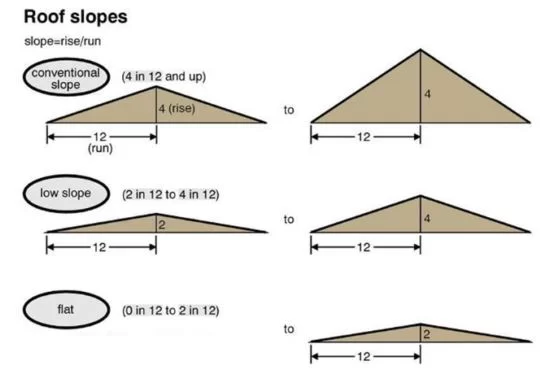Embarking on a roofing project requires a fundamental understanding of the critical factor that dictates performance – the slope. Delve into the nuances of “What Is the Minimum Slope for a Shingle Roof” to make informed decisions for your roofing endeavors.

Decoding the Basics: What Is the Minimum Slope for a Shingle Roof?
Before you embark on a roofing project, understanding the minimum slope requirements for shingle roofs is essential. This guide aims to unravel the mysteries, providing valuable insights for homeowners and DIY enthusiasts alike.
Grasping the Essentials – What Is the Minimum Slope for a Shingle Roof?
To ensure the longevity and effectiveness of a shingle roof, the slope, also known as the pitch, plays a pivotal role. Let’s explore the optimal range for a shingle roof to function at its best.
Factors Influencing
- Shingle Type: Different shingle materials and types have distinct slope requirements. Asphalt shingles, for example, are versatile and can accommodate lower slopes, while other materials like wood or slate may have more stringent slope requirements.
- Climate Considerations: The climate of your region can impact the minimum slope needed for a shingle roof. Areas with heavy rainfall or snowfall may require steeper slopes to facilitate proper water runoff and prevent water damage.
- Manufacturer Specifications: Always refer to the manufacturer’s guidelines for the specific shingles you are using. Manufacturers provide recommendations based on extensive testing to ensure optimal performance and durability.
- Local Building Codes: Local building codes often stipulate the minimum slope requirements for roofing in a particular area. Adhering to these codes is essential to ensure the structural integrity of the roof and compliance with regulations.
Determining the Right Pitch – What Is the Minimum Slope for a Shingle Roof?
Understanding the factors influencing the minimum slope is crucial, but determining the right pitch for your shingle roof involves a systematic approach.
Calculating the Minimum Slope for a Shingle Roof
- Consider Roofing Material: Different materials have different slope requirements. Asphalt shingles, for instance, may work well on slopes as low as 2:12, meaning for every 12 inches of horizontal run, there is a 2-inch rise.
- Evaluate Climate Conditions: Assess the climate in your area. Regions with heavy precipitation may require steeper slopes to prevent water accumulation, whereas dry climates may allow for lower slopes.
- Consult Local Building Codes: Always check local building codes for specific slope requirements. Compliance with these codes is not only essential for safety but also for obtaining necessary permits for your roofing project.
Potential Challenges and Solutions
While lower slopes may be permissible for shingle roofs, there are challenges associated with them. Understanding these challenges and implementing solutions is crucial for a successful roofing project.
Common Challenges and Solutions
- Water Runoff: Low slopes can lead to water runoff challenges, increasing the risk of leaks. Adequate drainage solutions, such as gutters and downspouts, can mitigate this issue.
- Material Compatibility: Some shingle materials may not perform optimally on low slopes. Choosing the right type of shingle for your specific slope is critical for longevity and performance.
- Professional Installation: Low-slope roofs require precise installation to ensure water tightness. Hiring a professional roofing contractor with experience in low-slope applications is recommended.
Conclusion: Striking the Right Balance for a Lasting Roof
In conclusion, understanding “What Is the Minimum Slope for a Shingle Roof” is a pivotal aspect of successful roofing projects. By considering factors such as roofing material, climate, and local building codes, homeowners can make informed decisions for optimal roof performance. Remember, consulting with roofing professionals and adhering to manufacturer specifications and local building codes are key steps in ensuring a lasting and effective shingle roof.



Leave a Reply